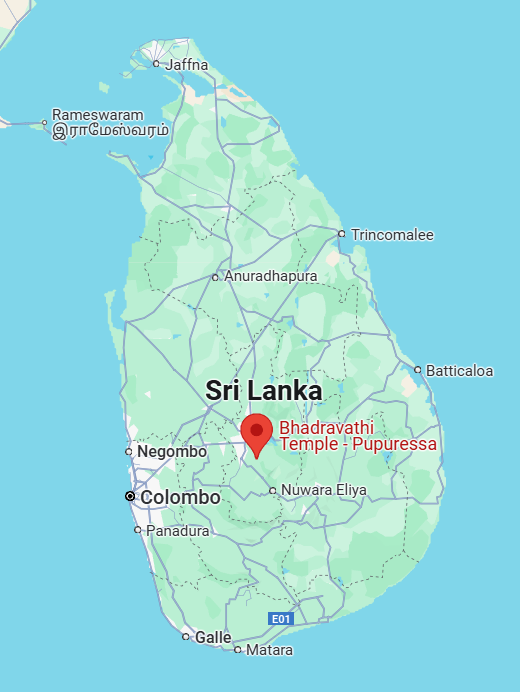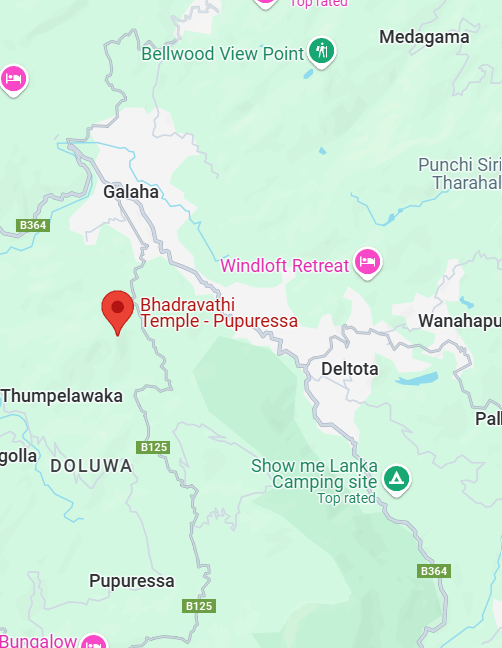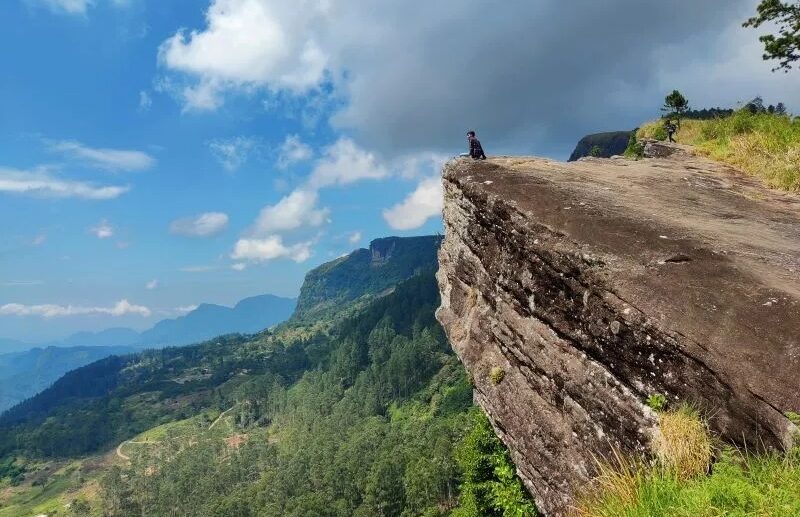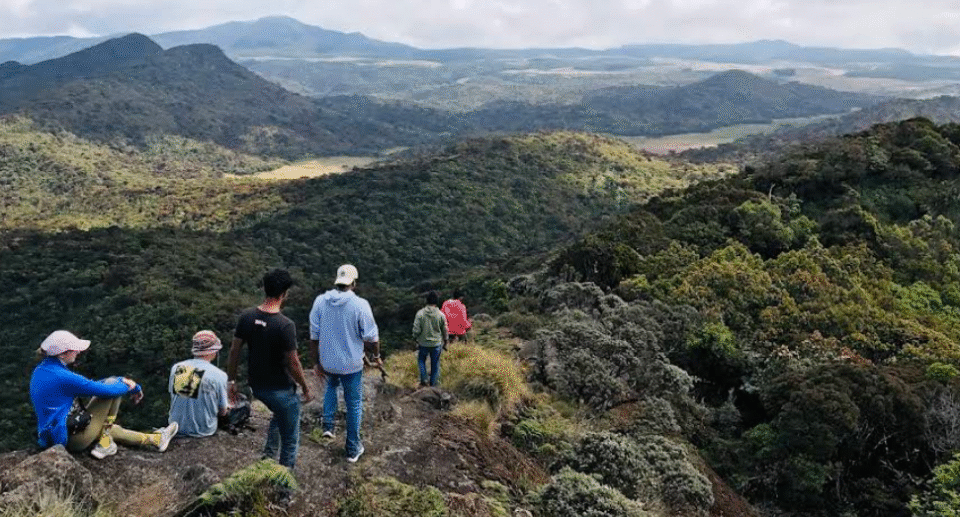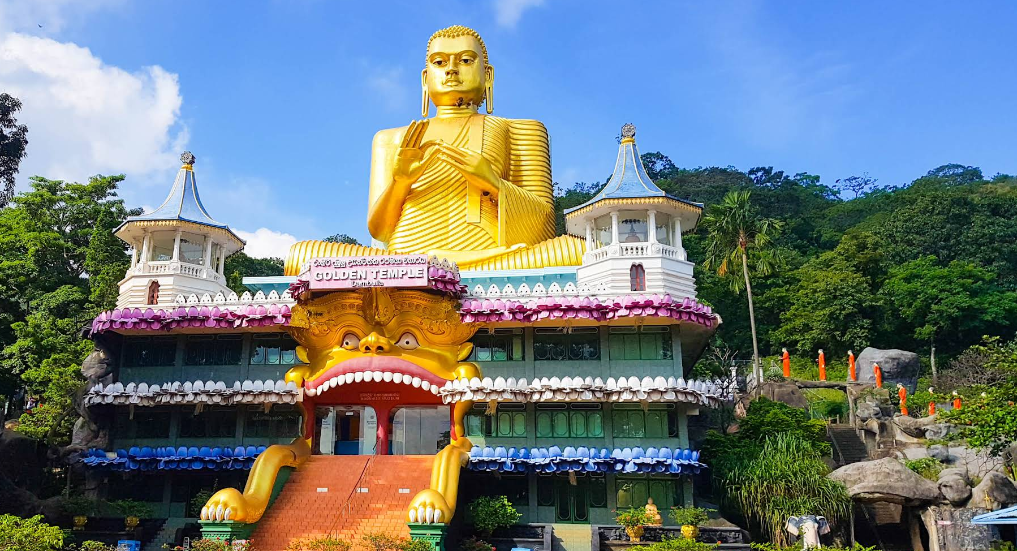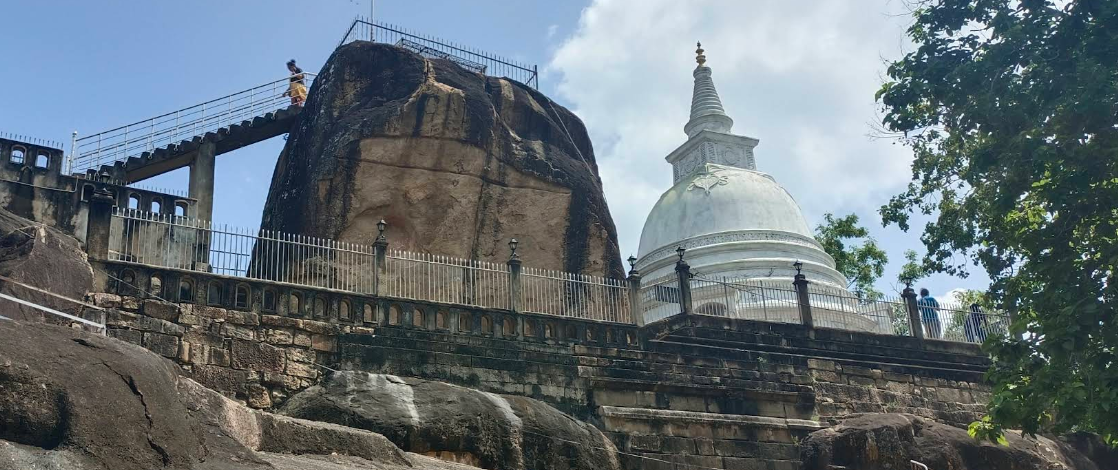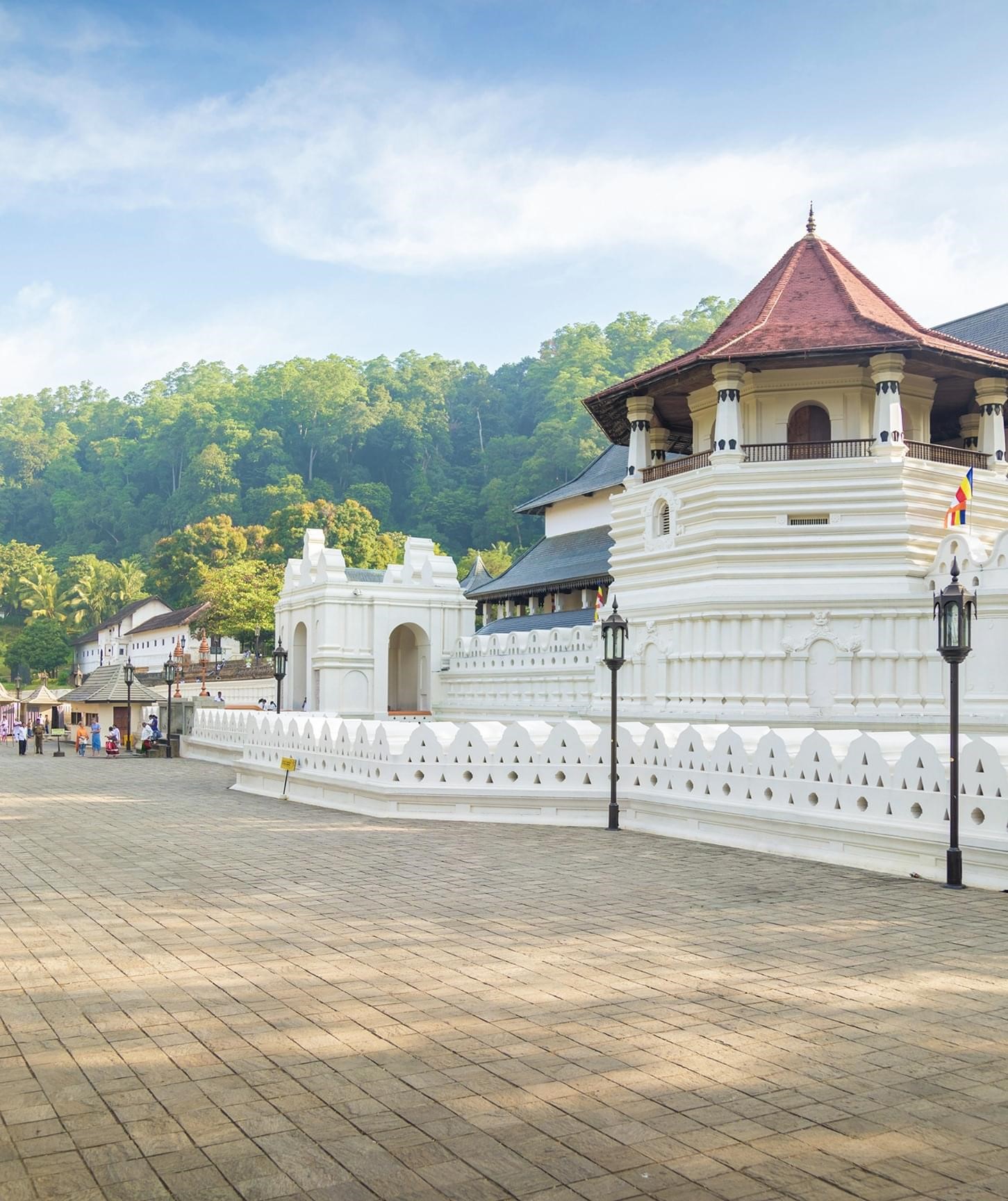Bhadravathi Temple: A Sanctuary of Serenity and Spiritual Devotion
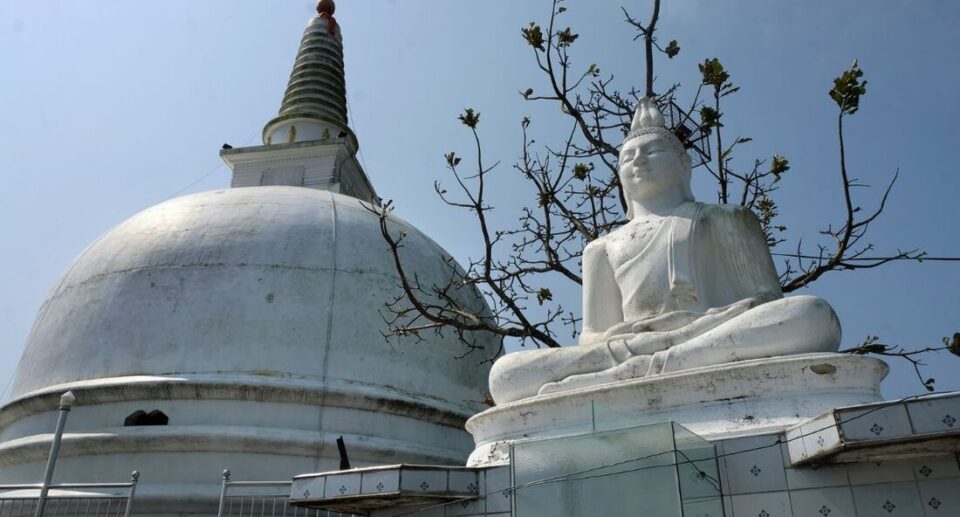
Bhadravathi Temple, located deep in the misty hills of central Sri Lanka, is a peaceful but symbolic representation of Buddhist spirituality, healing, and architectural beauty. Located some 22 kilometers south of Kandy, near the small town of Galaha, the temple stands atop a scenic hill with views over the Hanthana mountain range and surrounding tea estates. Far removed from the madness of city life, Bhadravathi Temple is not just a place of spiritual solace for pilgrims but also a healing sanctuary for aged and ill monks. This unique combination of spiritual discipline, social work, and nature makes the temple a crucial but lesser-recognized diamond in the rich religious and cultural heritage of Sri Lanka.
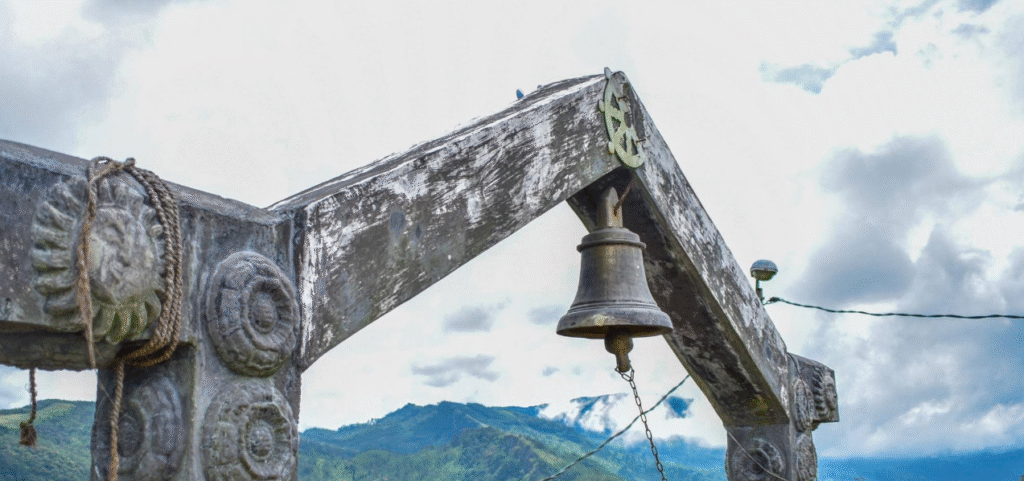
Historical Background
Bhadravathi Temple is relatively new when considered in the context of Sri Lanka’s ancient Buddhist complexes such as Anuradhapura or Polonnaruwa, but it is extremely culturally and institutionally significant. It is maintained by the Asgiriya chapter of the Siyam Nikaya, which is one of the main monastic orders of the Theravāda Buddhist order of Sri Lanka. This connection puts the temple in the context of centuries of Buddhist scholarship and tradition, specifically those surrounding Kandy, the country’s last royal capital and stronghold of ancient Buddhist tradition.

Currently, the temple has been restored to be a National Infirmary for Buddhist monks, a pioneering effort led by the Sri Lankan government under President Mahinda Rajapaksa and Health Minister Maithripala Sirisena. The goal was to create a sanctuary where sick and elderly monks could be properly treated while remaining within the monastic realm. This shift is indicative of Sri Lanka’s deep regard for its monastic order and its intent to safeguard the well-being of those who dedicate their lives to religious service.
Spiritual and Cultural Significance
Fundamentally, Bhadravathi Temple is a meditation center, a place of contemplation and spiritual renewal. It is not merely a venue for rituals and ceremonies but a functional monastery that nourishes mind and soul. For most travelers, the temple is a perfect destination for Vipassanā (insight) meditation because its natural calmness and scenic isolation produce a deep sense of peace.
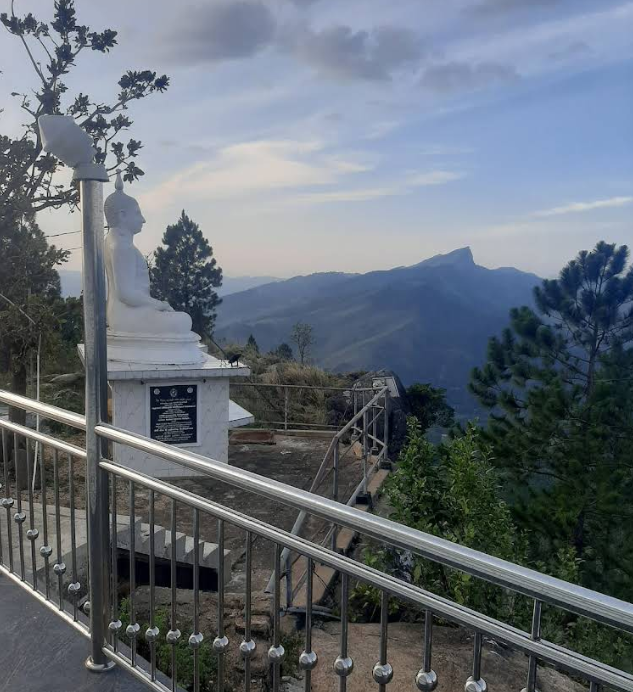
Buddhist temples in Sri Lankan society are not only places of worship but also community centers, schools, and repositories of cultural heritage. Bhadravathi Temple, despite being modern in its construction, continues this function. Its location in the highlands reminds us of Buddhism’s continued grip even in the most isolated regions of the island.
In addition, the temple’s role as a healing center is rooted in the Buddhist ethical value of compassion (karuṇā). It illustrates an exemplary effort to take care of the sick and old within the Sangha (monastic order), following the Buddha’s own way of caring for the sick, as witnessed in the Pāli Canon.
Architectural Design
Though modest next to Anuradhapura’s towering stupas or Dambulla’s exquisite shrines, Bhadravathi Temple has a unique story to tell in architecture. Visitors climb to the temple along a long stone staircase that cuts through the emerald hillside. It is both physical and metaphoric—the ascent to religious elevation on a symbolic level.
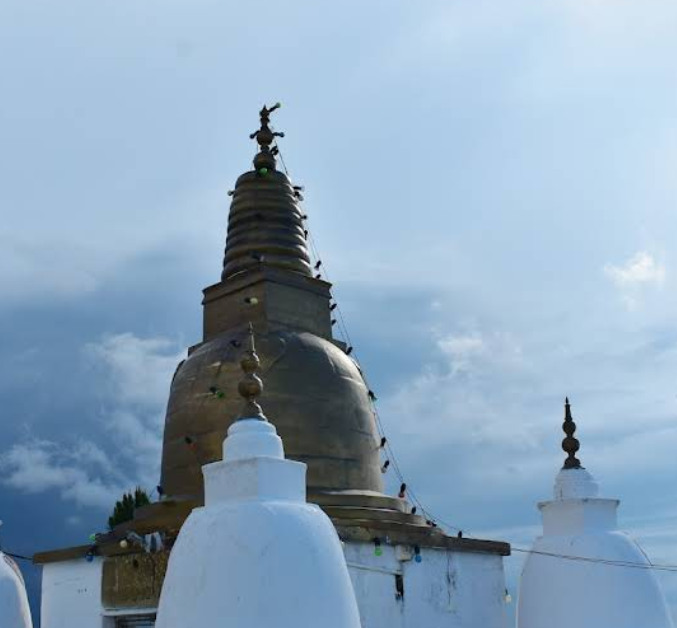
At the summit, there is a whitewashed stupa and a large Buddha image, both modern in design but simplicity and elegance of the ancient Buddhist structures. One special feature is the stupa possessing a room inside—a very unusual feature in stupas—which allows pilgrims to enter and perform circumambulation (pradakṣiṇā) in a peaceful, meditative room beneath the dome.
Temple buildings, such as infirmary quarters, are designed for utility and reassurance. Clean lines, natural ventilation, and open verandas serve to create a serene environment that adds to the twofold purpose of the temple as both a place of worship and recovery. The use of white paint throughout the buildings gives them an air of cleanliness and lightness, visually in tune with clouds and mists which surround the hilltop.
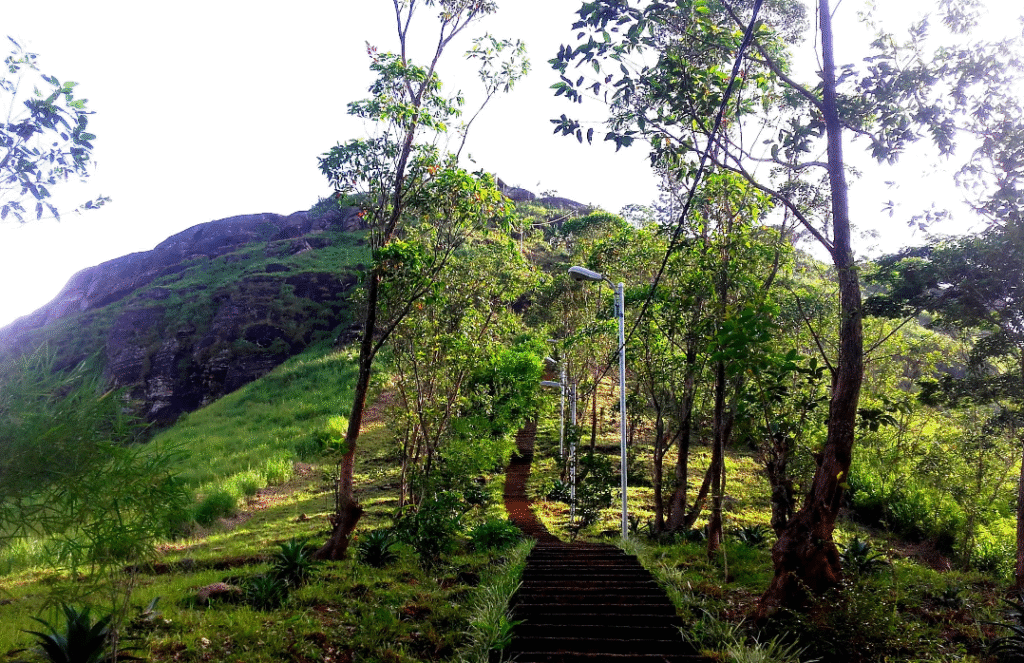
Natural beauty and atmosphere
Bhadravathi Temple’s siting is perhaps its most notable virtue. Standing at over 1,000 meters above sea level, it offers spectacular views that stretch out over the central highlands of Sri Lanka. On a clear day, one sees layers of mist-shrouded hills and tea plantations of green leaves reaching far out into the distance. The crisp mountain air and gentle breezes only add to the temple’s serene landscape.
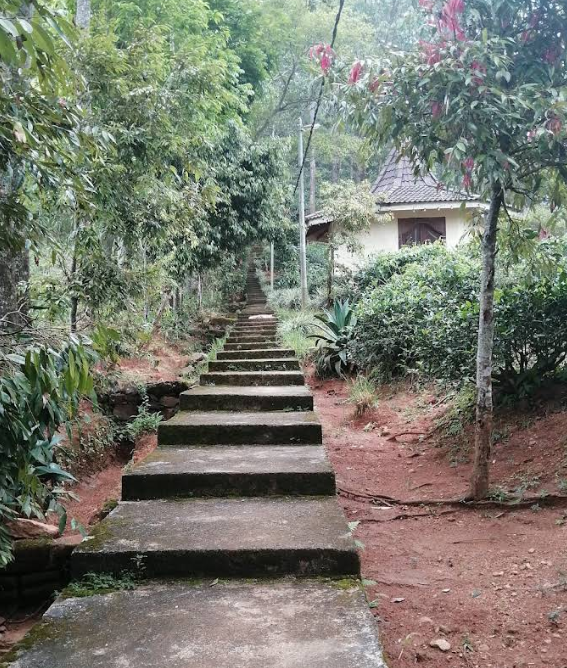
The Hanthana mountain range surrounding it, rich in biodiversity and legend, is a majestic backdrop. The flora and fauna of the region, like orchids, butterflies, and birds, offer nature immersion that facilitates meditation and contemplation.
This interplay between built environment and nature is deeply in line with Buddhist doctrine, the principle of interdependence (paṭicca samuppāda) being relevant here. The tourists can be often heard remarking that the temple seems to “breathe” with the hills, creating a haven that sustains body and spirit.
Community Engagement and Social Role
While Bhadravathi Temple is somewhat remote, it is closely linked to the villages of Galaha and the broader Kandy area. The villagers regularly visit the temple for poya day festivals, alms giving (dāna), and benedictions from monks who live in the temple. The temple occasionally organizes periodic health camps and dhamma talks, marking it a locally focused institution.
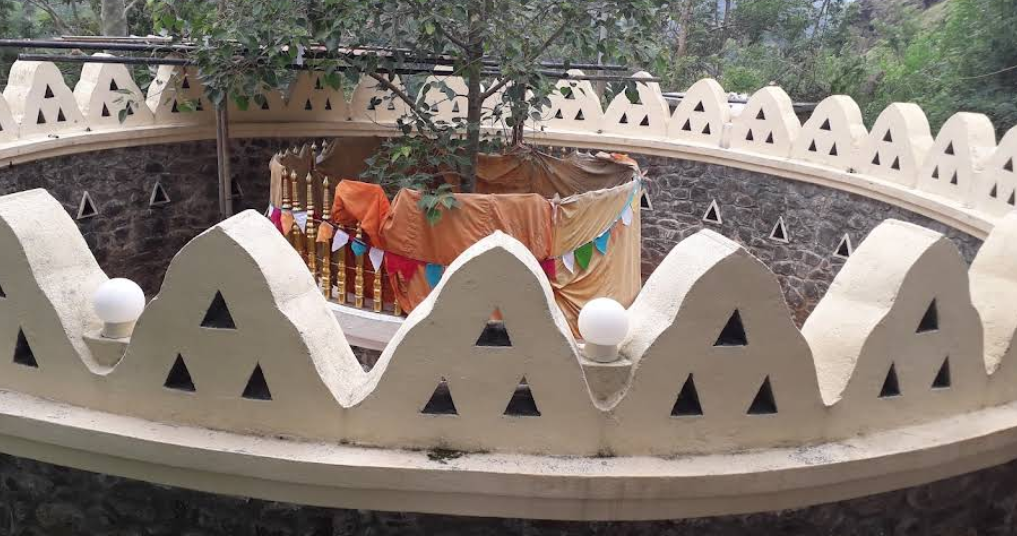
The presence of an infirmary in the temple brings a special group to the temple—a group that has worked and instructed for many decades. These older adults function as de facto mentors and sources of wisdom for other younger monks and even transient laity. Their stories, lessons, and experiences create an irreplaceable connection between then and now, enriching the cultural heritage of the temple.
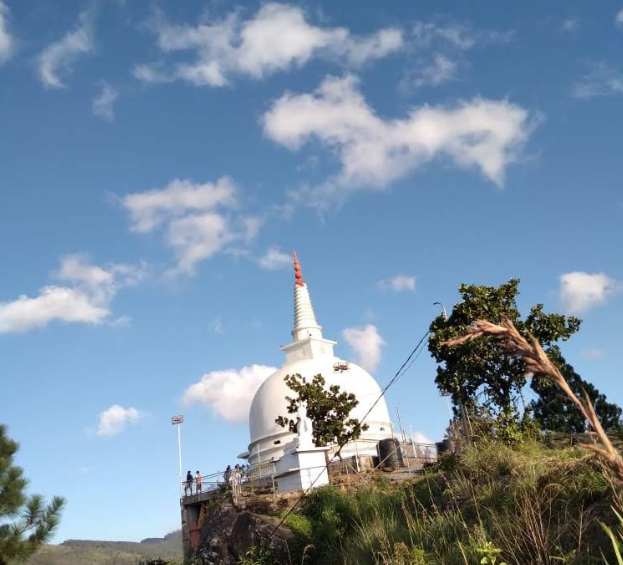
Bhadravathi Temple is a beacon of compassion, peace, and religious commitment in the heart of Sri Lanka’s hill country. Less well known than the island’s ancient Buddhist icons, it is an integral contemporary role—a monastery, a center for the sick, and a sanctuary. Its blend of architectural attractiveness, natural appeal, and social importance makes it a remarkable model of living Buddhism in the contemporary world.
For tourists seeking more from their tourist attractions and historic landmarks, Bhadravathi Temple offers a rich experience of the spirit of Sri Lankan Buddhism—a religion grounded on compassion, introspection, and serenity. Whether one comes as a pilgrim, guardian, or tourist, one cannot help but be moved by the calm greatness of this sacred site. In a world that is too frequently marked by speed and clamor, Bhadravathi Temple reminds us of the enduring value of simplicity, service, and quiet.
Getting to Bhadravathi Temple
From Kandy:
- By Car or Taxi:
- Drive approximately 22 km south from Kandy via Hanthana Road.
- Continue towards Galaha, then take the Delpitiya Road (B125) towards Pupuressa.
- The temple is located about 3 km south of Galaha.
- A parking area is available at the base of the hill.
- By Public Transport:
- Take a bus from Kandy to Galaha.
- From Galaha, hire a tuk-tuk or walk approximately 3 km to the temple.
From Colombo:
- By Car or Taxi:
- Drive approximately 110 km east via the A1 highway to Kandy.
- Follow the directions from Kandy as mentioned above.
- By Train:
- Take a train from Colombo to Kandy.
- From Kandy, follow the directions above.
Location & Coordinates
- Address: Bhadravathi Temple, Galaha – Pupuressa – Delpitiya Road, Galaha, Sri Lanka
- Coordinates: Approximately 7°16′N 80°34′E
